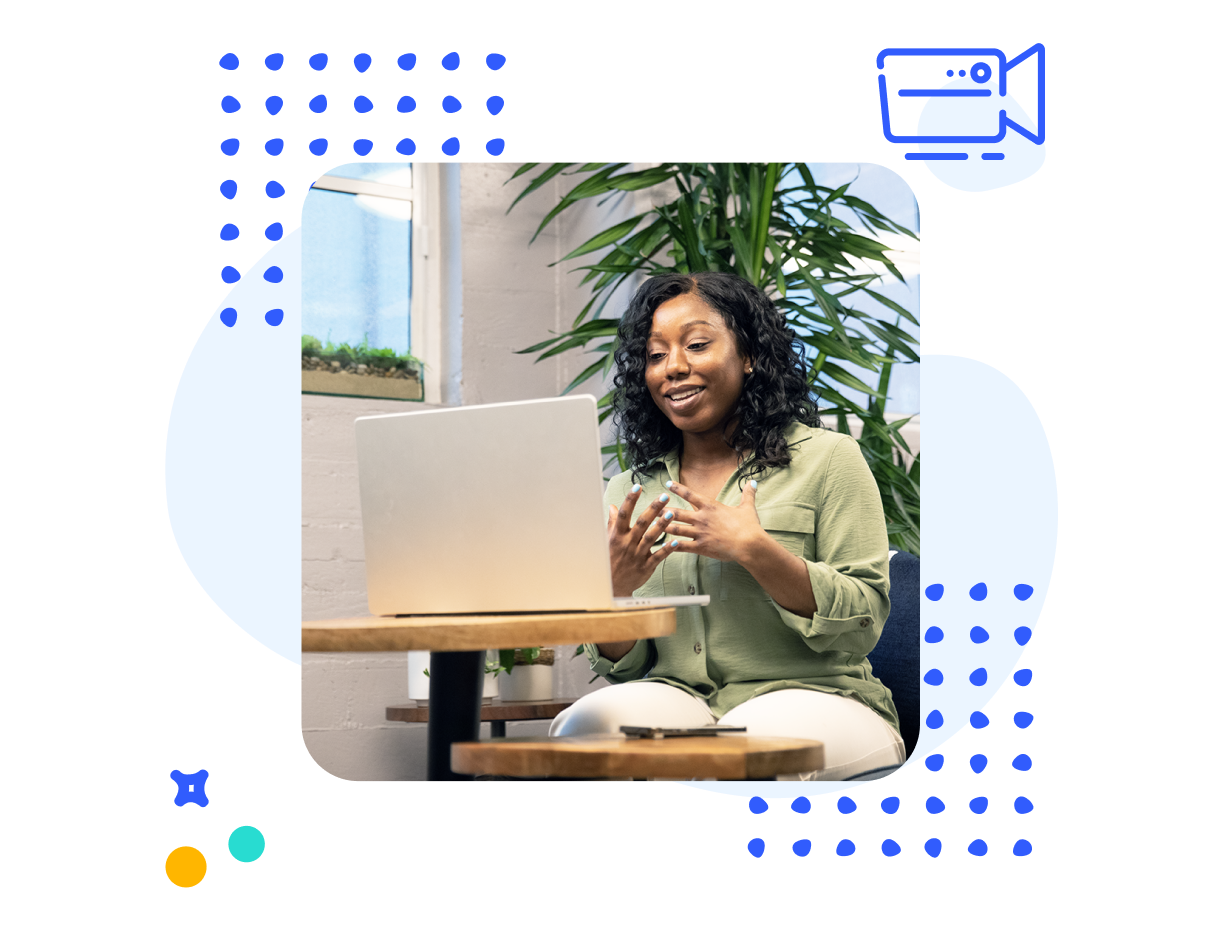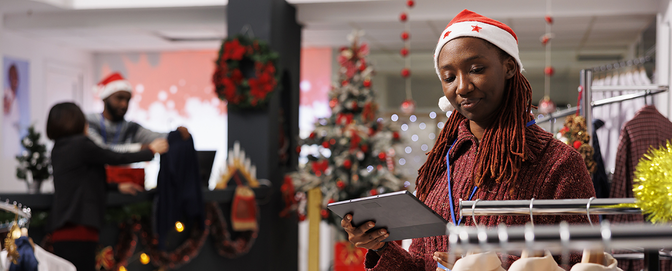
Continuous discovery: all your questions answered

This blog post is a follow-up to our webinar, "Continuous Discovery: Transform your product development." We saved attendees' questions at the end of the webinar and answered them throughout this piece.
In today’s world, it’s well-understood that digital products are never done. They’re always evolving. Still, many product teams’ discovery process is out of step with that reality. Product ideas aren’t fully examined before investment, there aren’t enough ideas considered, and there is a disconnect between opportunities and outputs.
It’s common for teams to become so focused on features and outputs that they miss the crucial step of attaching those outputs to real opportunities. All of this results in an overwhelming backlog of feature ideas that aren’t validated. The best way to avoid this issue is with a discovery process that ensures only the most important ideas rise to the top.
Traditionally, discovery research has been viewed as a discrete, project-based phase in the process of product design and development. It’s performed at the beginning of a project and then viewed as complete. Continuous discovery, however, is an ongoing process. It focuses on constantly infusing product decisions with customer input.
In continuous discovery webinar, we discussed some of the fundamentals of continuous discovery. Let's have a quick refresher before jumping into people's questions about it.
What is continuous discovery?
Continuous discovery is an approach that shifts research into a customer-driven process where product design teams work with customers to co-create their products. In continuous discovery, product teams do faster and more frequent user research to remain in touch with their customers as they improve their products.
Teresa Torres, an internationally acclaimed author, speaker, and product discovery coach, coined the term in her book Continuous Discovery Habits: Discover Products That Create Customer Value and Business Value where she discusses how this different discovery approach ensures successful outcomes.
Listen to Teresa’s interview on Insights Unlocked here.
Key principles of continuous discovery
Continuous discovery has some core principles that are designed to make the discovery process more collaborative and consistent.
The product trio
Instead of throwing discovery insights over the fence to a different team to work with, continuous discovery features the collaboration of product, design, development (and often UX research) teams to solve problems and create solutions. Together, they’re focused on driving a specific outcome, a change in user behavior.
Interviews to identify opportunities
Customers are interviewed on a consistent and regular basis, often weekly. These interviews seek to understand the users’ individual stories behind their usage of a product or feature. Through the customers’ storytelling, the product trio collaboratively searches for desires, pain points, and unmet needs.
Opportunity solution tree to bridge gaps
Teresa’s “opportunity solutions tree” is used by the team to visually map out priorities and solutions. It begins with outcomes at the top, and branches down into opportunities, solutions, and—finally—solutions.
Testing assumptions
Before jumping into solutions, continuous discovery has the team first test their assumptions. They must find out which assumptions must be true for the solutions to work. Those assumptions may be tested via prototypes, quick tests, surveys, and more.
The challenges of continuous discovery
Shifting to continuous discovery can present challenges for teams. It sometimes feels like there’s a saturation of insights and it can be difficult to know which ones matter. It can also be difficult to get teams who were previously uninvolved in product discovery engaged. There’s also training involved. Customer interviews—a core skill in continuous discovery—requires coaching and support for colleagues who need time to learn.
Now that we've laid out some context, let's jump into the specific themes we'll be addressing based on people's questions from the webinar.
How to set up and facilitate meaningful customer interviews
"We do not go into the interview with super specific questions that we go through step by step, but the interview is more focused on excavating a story from the person we’re interviewing. It is a shift from the approach we take with typical 'project based discovery.'" – Sara Logel, Senior Staff Research Consultant, UserTesting
A key concept behind customer interviews in relation to Continuous Discovery is “story-based interviewing.”
To have good interviews, the first step is getting very specific about the outcomes you’re looking for. Are you searching for pain points, trying to understand user behavior, or exploring potential solutions? Clear objectives at the outset guide the interview process and help ensure actionable insights.
Next, identify the behavior change you’re trying to understand. This helps focus the interviews so that they can then be mapped onto an opportunity solution tree. For example, if you’re trying to understand why users aren’t adopting a new feature, the interviews should be geared to uncovering underlying reasons and barriers.
When conducting the interview itself, focus on getting your customers to tell their stories and share their experiences. This means utilizing open-ended questions, practicing deep listening, and probing for additional context. These kinds of questions often start with “Tell me about a time…” or “Tell me about the last time you…” in order to dive deeper into specific aspects of their stories, uncovering richer insights.
How to ensure continuous insights
"The first thing to do when continuous interviewing is to always ask about their story using our product 'Tell me about the last time' or 'What do you think we can improve'. So if you keep adding to the backlog and improving things, users keep finding new things to talk you through." – Sofia Gonzalez, UX Research Manager, Travelport
Defining success
Continuous discovery should be carried out in conjunction with existing processes such as validation, evaluation, benchmarking, and iterative design. During the initial period of learning and applying continuous discovery, it’s natural for it to be more sporadic than truly continuous.
Success markers in the early stages of continuous discovery should be:
- Creation of a standard toolkit for others to use
- Upskilling the team to become experts before a wider rollout
- Improving efficiency in translating opportunities to testing
- Improving speed of valuable insights
- Identification of previously unknown user needs and pain points
As your continuous discovery program expands, you’ll track more specific metrics such as:
- Stakeholder engagement and satisfaction
- Number of insights translated to actionable product changes
- Engagement of other departments
- Improved shared visualizations of opportunities and solutions
- Shared understanding of user needs across teams
Ultimately, success means positively changing the product outcome the team is focused on to begin with. As long as your markers of success ladder up to this ultimate goal, you're in good shape.
Research questions
As mentioned, getting customers to tell stories is the key to continuous insights. As this becomes a habit for your team, you’ll improve at drawing out additional insights as your product evolves. New research questions will emerge from your continuing collection of recorded video sessions, metrics, funnels, and survey comments. The questions you ask should always relate to understanding. For example, “Why are people dropping in this step?” Can you walk me through what happened when you tried to …?”
At first, it may feel like you’re hearing the same things over and over. If that’s the case, consider whether you’re going deep enough into the why behind customers’ stories and drilling down into what they mean.
Documenting insights
As you begin to spin up continuous discovery at your organization, it’s important to maintain a research repository. After each interview, create a document that summarizes what was said. Teresa Torres refers to this as an “interview snapshot.” Interview snapshots are often created collaboratively in a tool like Miro for each particular problem or initiative.
From there, it’s easy to upload and tag the snapshots in EnjoyHQ, a repository tool for research and insights. Doing this ensures that insights are accessible and surfaced as new data points along with other qualitative and quantitative data. Once you have a handful of interviews, you can begin to build an opportunity solution tree with links to specific issues in the backlog. This repository can be kept in AHA, Jira, Trello, or whatever platform is native to your company.
Prioritizing insights
“If you do one interview per week, after a few you may start to identify patterns and you can then add those learnings in the opportunity solution tree. You continue to build out the tree from there and as a team, decide what opportunity to focus on.” – Sara Logel, Senior Staff Research Consultant, UserTesting
Continuous discovery is about talking with users frequently, not doing the perfect strategic complex and risky research. It doesn’t have to be perfect. However, you and your team should establish a consistent way of prioritizing which insights should be acted upon. To prevent your team from automatically acting upon insights from their last interview, lean on the opportunity solution tree and talk through priorities collaboratively. The product trio must agree on what to focus on, what opportunities should be added to the tree, and what solutions should be explored.
Formatting a user needs log
"By stating the need from the user’s perspective, this format - goal oriented and utilitarian - helps us understand users’ requirements by focusing on user problems and unmet needs rather than proposing solutions." – Susan Liu, Senior User Research Manager, Sage
It’s easy for a teams’ user needs log to turn into a list of solutions rather than an accurate depiction of users’ perspectives. To prevent this, you can adopt the Government Digital Service (GDS) format for defining user needs.
Originating from the UK government’s initiative to enhance digital services, the GDS format is a structured framework that the product trio can harness to pinpoint and define user needs with precision. It defines a user need as a specific requirement that a service must satisfy to deliver the desired outcome for the user. By stating the need from the user’s perspective, you keep your users’ real problems as the point of focus—rather than solution ideas.
Final thoughts
Continuous discovery isn’t limited to the parameters mentioned above. The spirit of it can be employed by any team member and any team size. The crux of the approach is setting up regular interviews with customers to identify opportunities and areas of focus, then quickly testing assumptions to move those forward.
Moving in this direction can ensure that insights aren’t just gathered at the beginning of projects, but are a driving strategic force at your organization—resulting in greater customer satisfaction and superior products.

Watch a demo
See how easy it is to get fast feedback on a website, prototype, design, or more in this demo.





